40 Fun Things to Do in Tokyo, Japan | 2024 (with Photos)

Tokyo, the bustling capital of Japan, is a city that is both steeped in tradition and at the forefront of modern technology. With its endless array of attractions, it's no surprise that Tokyo is a popular destination for travelers from all over the world.
From traditional temples to delicious Japanese dishes, there is something for everyone in this vibrant city. We have compiled a list of 40 fun things to do when you explore Tokyo so that you can make the most of your trip and create unforgettable memories.
Most Recommended Thing to Do
Visit the Tsukiji Fish Market.
Top Choice Hotel
Park Hyatt Tokyo
Our Top Choice Restaurant
Sukiyabashi Jiro
Our Top Choice Bar for Nightlife
New York Bar
Best Time to Visit
Cherry blossoms blooming in spring, cool temperature.
Average Temperature
Mild, ranging from 50°F in winter to 80°F in summer.
Transportation Options
Subway, bus, taxi, train, bike, car, walking, ferry.
Average Cost ($, $$, $$$)
$$
My Top Recommendation
When in Tokyo, Japan, immerse yourself in the bustling atmosphere of the Tsukiji Fish Market and savor the freshest sushi at one of the nearby local eateries for a truly authentic culinary experience.
For a dose of tranquility amidst the urban chaos, wander through the peaceful Hamarikyu Gardens, where you can escape the bustling city life and enjoy a traditional Japanese tea ceremony in a serene setting.
What You'll Need to Bring
- Comfortable walking shoes, electronic devices with a universal adapter
- Light layers, portable umbrella, reusable water bottle
What Not to Miss
-
Tsukiji Fish Market
-
Shibuya Crossing
-
Meiji Shrine
-
Harajuku District
-
Tokyo Tower
-
Asakusa and Senso-ji Temple
-
Akihabara Electric Town
-
Shinjuku Gyoen National Garden
What to Avoid
-
Overcrowded trains and stations
-
Rush hour commute
-
Flashy displays of wealth
-
Loud or disruptive behavior
Table of Contents
1. Wander around the famous Shibuya Crossing
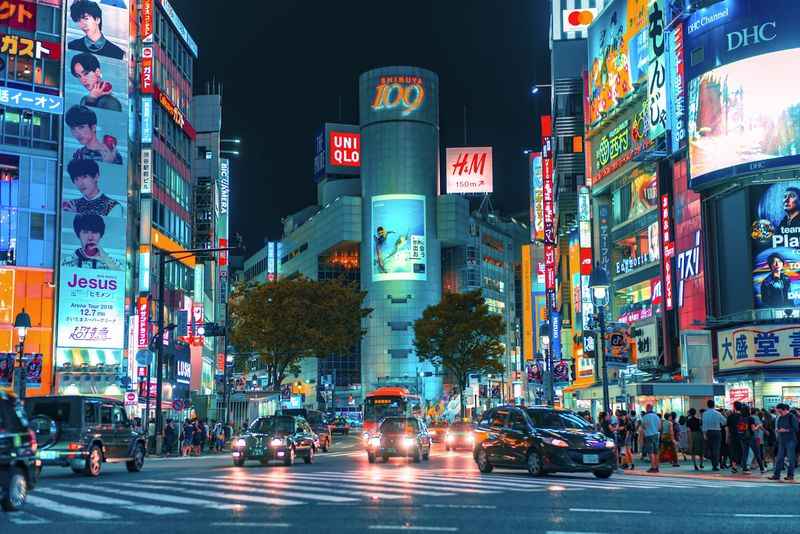
Shibuya Crossing, located in the heart of Tokyo's Shibuya neighborhood, is one of the most famous and iconic intersections in the world. Known as the world's busiest intersection, it sees hundreds of thousands of people crossing every day, making for an exhilarating and chaotic experience.
The intersection is surrounded by towering neon advertisements, bustling shops, and vibrant nightlife, creating an electric atmosphere that is uniquely Tokyo. Visitors can watch the crossing from above at the nearby Shibuya Station, or immerse themselves in the chaos by crossing the street themselves.
2. See the impressive Rainbow Bridge over Tokyo Bay

The Rainbow Bridge is an iconic suspension bridge that spans Tokyo Bay, connecting the Shibaura Pier area with the Odaiba waterfront. The bridge is named after its stunning appearance at night when it is illuminated with rainbow-colored lights that reflect off the water below.
The pedestrian walkway on the bridge's lower level offers a unique perspective of the Tokyo skyline and the water below. The Rainbow Bridge is a popular spot for photography, especially at sunset and at night when the lights are on, and a must-see attraction for anyone visiting Tokyo.
3. Enjoy the views from the Tokyo Metropolitan Government Building

The Tokyo Metropolitan Government Building is a towering landmark in the heart of Shinjuku, Tokyo. The building sat at an impressive 243 meters tall and boasts breathtaking panoramic views of the city from its observation decks.
The interior of the building is equally impressive, with modern architecture and design elements that reflect the city's cutting-edge culture. The Tokyo Metropolitan Government Building also serves as the headquarters of the Tokyo Metropolitan Government, making it a hub of political and administrative activity.
4. Visit the Sensoji Buddhist Temple at Asakusa
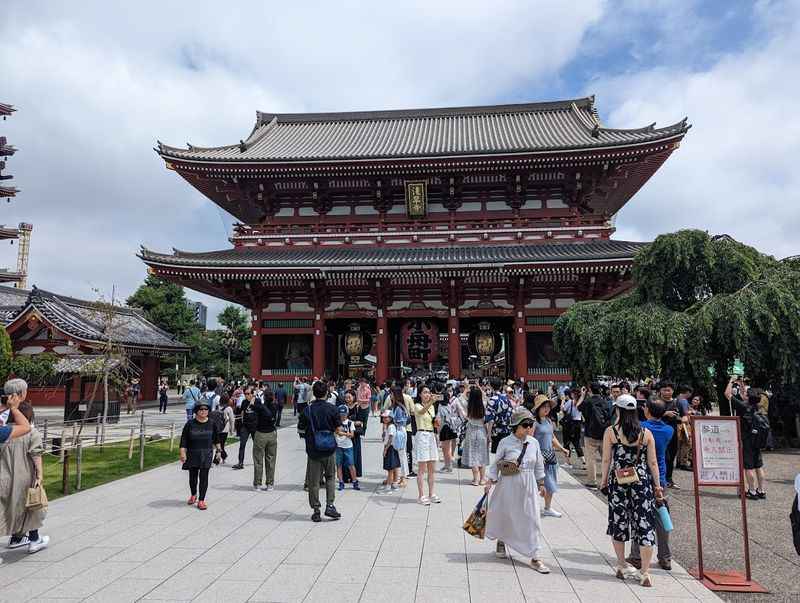
Sensoji Buddhist Temple, located near Asakusa Station, is one of the city's most popular cultural and tourist attractions. With a history dating back over 1,300 years, it is also one of Tokyo's oldest temples.
Visitors can explore the beautifully designed temple grounds, including the main hall, pagoda, and various smaller shrines. Sensoji is also known for its iconic Kaminarimon Gate, which features a massive red lantern and is a popular spot for photos.
5. See the Tokyo Tower, a symbol of the city
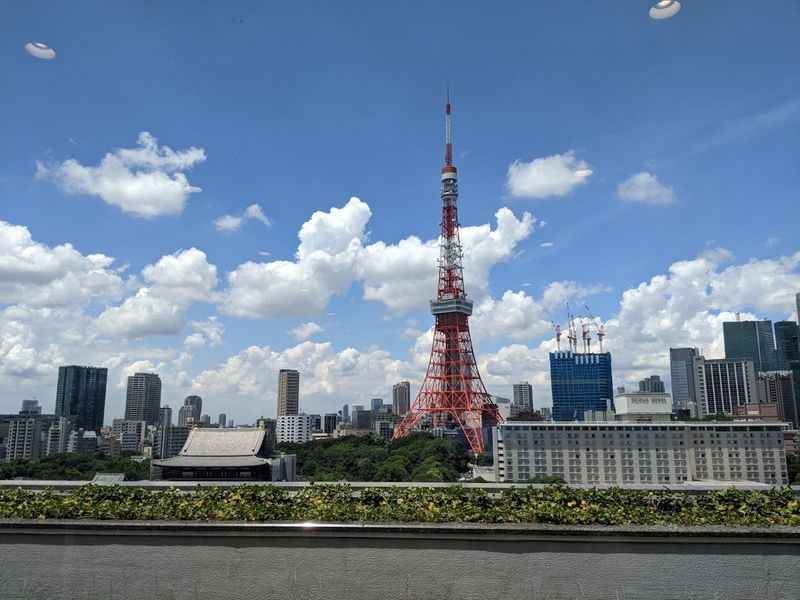
Tokyo Tower is one of the most iconic landmarks of Tokyo, Japan. Standing at 333 meters tall, it is the second-tallest structure in Japan after the Tokyo Skytree. Tokyo Tower was constructed in 1958 and has become a symbol of Japan's post-war economic growth.
Visitors can take an elevator to the main observation deck at 150 meters or to the special observation deck at 250 meters to enjoy panoramic views of the Tokyo skyline. On clear days, visitors can see as far as Mount Fuji in the distance. Tokyo Tower also has various attractions, including a wax museum, a small amusement park, and a café that rotates 360 degrees.
6. Climb the Tokyo Skytree

The Tokyo Skytree is an iconic landmark near Asakusa Station and one of the tallest structures in the world. This towering structure stands at a height of 634 meters, and its observation deck offers stunning panoramic views of the city.
Visitors can enjoy the breathtaking scenery of Tokyo from different angles, including Mount Fuji on a clear day. In addition to its observation deck, the Tokyo Skytree also houses a shopping mall, aquarium, and numerous restaurants, making it a great place to spend a whole day exploring.
7. Visit teamLab Borderless
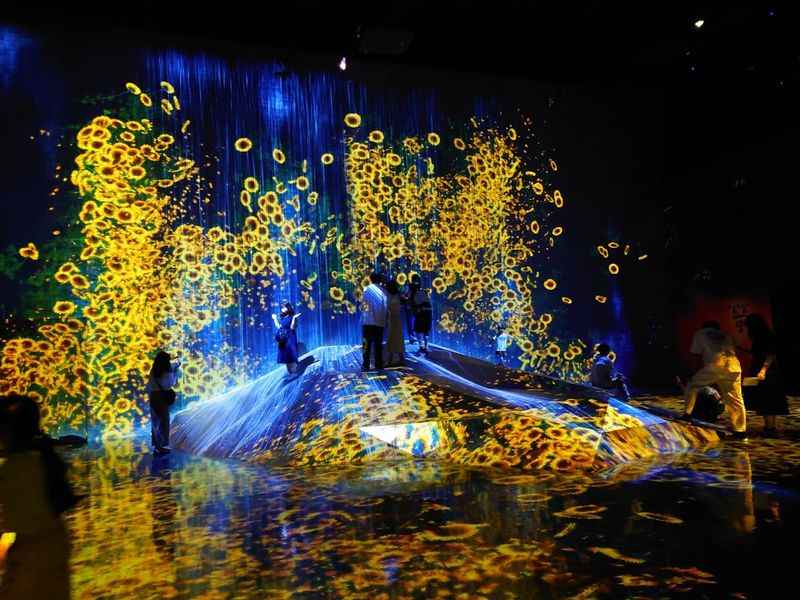
teamLab Borderless is a digital art museum where art and technology merge to create a truly immersive experience for visitors. The museum's stunning digital art exhibits are projected onto walls and floors, creating a mesmerizing atmosphere that blurs the boundaries between the physical and digital worlds.
Visitors can touch, move, and even become a part of the art as they explore the museum's many rooms and installations. TeamLab Borderless Tokyo is a must-visit destination for art lovers, tech enthusiasts, and anyone who wants to experience a truly unique and unforgettable artistic experience.
8. Enjoy a drink and live music in the famous New York Bar

The New York Bar is a world-famous jazz bar located on the 52nd floor of the Park Hyatt Tokyo in the Shinjuku district of Tokyo. The bar gained international recognition after featuring in the movie "Lost in Translation" starring Bill Murray and Scarlett Johansson.
The bar boasts a stunning panoramic view of the city skyline, including the iconic Tokyo Tower. New York Bar is sophisticated and offers live jazz performances every evening. You can enjoy a wide selection of cocktails and fine wines, as well as a gourmet menu featuring dishes such as Wagyu beef and caviar.
9. Head to Ramen Street
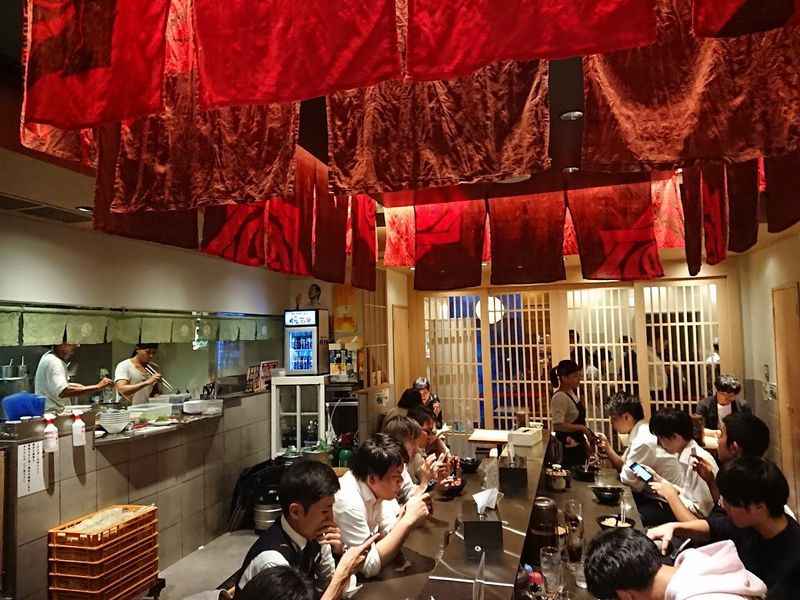
Ramen Street in Tokyo is a unique dining destination located in the underground shopping mall of Tokyo Station. As the name suggests, Ramen Street is dedicated entirely to one of the most popular Japanese dishes among foreigners along with Sushi and Wagyu Beef.
Each shop has its own distinct style and flavor, from traditional tonkatsu (pork bone broth) to innovative fusion creations. The shops often have long lines, but the wait is worth it for a chance to try some of the best ramen in Tokyo.
10. See the views from Shibuya Scramble Square Tower

Shibuya Scramble Square Tower is a must-visit destination in Tokyo, especially for those who love breathtaking views of the city. The 47-story skyscraper in the heart of the Shibuya district is home to the Shibuya Sky rooftop observatory, which is located on the 46th and 47th floors.
Shibuya Sky is a 360-degree observation deck, offering an unparalleled view of the city from above, including the iconic Shibuya Crossing. From the top of the tower, visitors can see the Tokyo Tower and Tokyo Skytree.
11. Explore the world of Hayao Miyazaki at the Ghibli Museum

Located in the Mitaka neighborhood of Tokyo, the Ghibli Museum features exhibits and installations that offer a glimpse into the magical and imaginative world of Studio Ghibli. Its whimsical design, which was overseen by Hayao Miyazaki, makes for a truly enchanting experience.
You can learn about the art and technique of animation, and see some famous film characters such as a replica of Cat Bus from My Neighbour Totoro and a robot from Castle in the Sky. The Ghibli Museum also has a café and a gift shop and is definitely one of the most unique things to do in Tokyo.
12. Stop by Tokyo Station

Tokyo Station is a historic and iconic transportation hub in the heart of Tokyo, Japan. It was first opened in 1914 and has undergone several renovations and restorations to maintain its beauty and functionality.
The train station serves as a gateway to various parts of the city, including tourist destinations like Akihabara and Ginza. Visitors to Tokyo Station can marvel at its architecture, which blends traditional Japanese design with Western elements. The train station is also a great place to grab a bite or do some shopping.
13. Take a boat tour of Tokyo Bay

Tokyo Bay is a sprawling body of water located in the heart of Tokyo, Japan. It is an iconic and essential part of the city's identity, serving as both a vital shipping route and a beautiful natural attraction.
Visitors to Tokyo Bay can enjoy stunning views of the city's skyline, including landmarks like the Tokyo Tower and Rainbow Bridge. The bay is also home to several man-made islands, including the popular Odaiba, which boasts a variety of shopping, dining, and entertainment options.
14. See the cherry blossoms of Shinjuku Gyoen National Garden

Located in the bustling Shinjuku neighborhood, the Shinjuku Gyoen National Garden features a unique blend of traditional Japanese gardens and Western-style gardens, making for a truly diverse and beautiful landscape.
Visitors can explore the garden's three distinct areas, which include a French Formal Garden, an English Landscape Garden, and Tokyo's traditional Japanese gardens. The garden is a popular spot for locals and tourists alike to enjoy the natural beauty of Tokyo, especially when the park is filled with cherry trees in full bloom.
15. Enjoy karaoke at the nightlife district of Shinjuku Station

Shinjuku Station is one of the busiest transportation hubs in Tokyo, and it's also known for its vibrant nightlife scene. The area around the station is filled with an array of bars, clubs, and restaurants that stay open late into the night, making it a popular destination for locals and tourists alike.
Shinjuku's nightlife district has something for everyone, from small, cozy bars to large, high-energy nightclubs. Visitors can enjoy live music performances and karaoke. The district is also known for its excellent dining options, with a wide variety of restaurants offering traditional Japanese cuisine as well as international dishes.
16. Visit the Tokyo Imperial Palace

The Tokyo Imperial Palace, located in the Chiyoda ward of Tokyo, is the primary residence of the Emperor of Japan and serves as the administrative center of the country. The palace is surrounded by a moat and large gardens, which are open to the public and provide a peaceful oasis in the heart of the bustling city.
Visitors can take guided tours of the palace grounds, which include a visit to the historic Nijubashi Bridge and the elegant Fujimi-yagura keep. The palace's history and significance in Japanese culture make it a popular destination for tourists looking to learn more about the country's rich heritage.
17. Take a Japanese Cooking Class

Taking a Japanese cooking class in Tokyo is an excellent way to immerse yourself in the country's rich culinary culture. The city is home to many cooking schools and workshops where you can learn to cook traditional Japanese dishes, including sushi, ramen, and tempura.
Japanese cuisine is known for its emphasis on fresh, seasonal ingredients, and precise preparation techniques, and a cooking class can provide a unique opportunity to learn these skills firsthand. In addition to learning how to cook delicious Japanese dishes, taking a cooking class in Tokyo can also give you a deeper appreciation for the country's food culture and its influence on the world.
18. See the cherry blossoms at Ueno Park

Ueno Park is one of the city's largest and most popular public parks. Ueno Park is home to numerous museums, galleries, and cultural institutions, including the Tokyo National Museum, the National Museum of Nature and Science, and the Tokyo Metropolitan Art Museum.
Visitors can also explore the park's beautiful gardens, which are home to over 8,000 trees and feature a variety of seasonal flowers and plants. Ueno Park is a popular spot for locals and tourists alike and it is particularly beautiful during the cherry blossom season, filled with vibrant pink blooms.
19. Explore the Tsukiji Fish Market

Tsukiji Fish Market, located in central Tokyo, handles over 400 different types of seafood and attracts visitors from all over the world. The market boasts over 80 years of history and tradition and is one of the most fun things to do in Tokyo.
Tsukiji Fish Market is known for its famous tuna auction, where visitors can witness the exciting bidding process for giant tuna fish. This famous tourist attraction at the market can now be seen at Toyosu Market.
20. Have a drink in the Golden Gai area of Shinjuku

Golden Gai is a cluster of narrow alleys in Shinjuku, lined with tiny bars and restaurants known as izakayas. The izakayas in Golden Gai are typically small and intimate, seating only a handful of guests at a time, and offer a unique glimpse into Tokyo's bar culture.
Each izakaya in Golden Gai has its own distinct vibe and atmosphere, ranging from cozy and traditional to eclectic and modern. Visitors can enjoy sake, beer, and small plates of traditional Japanese food. Golden Gai is a favorite spot for locals and tourists alike, and its lively atmosphere makes it one of the most fun things to do in Tokyo.
21. Experience a tea ceremony at Masudaya

Masudaya is a traditional tea house in the heart of Tokyo and a popular destination for visitors looking to experience the art and culture of the Japanese tea ceremony. The tea ceremony, or "Chado" in Japanese, is a highly ritualized practice that has been a part of Japanese culture for centuries.
Visitors to Masudaya can participate in a tea ceremony led by a professional tea master, who will guide guests through the intricate rituals of the ceremony, including the preparation and presentation of the tea itself. The tea house is designed in a traditional Japanese style, with tatami mat flooring, sliding doors, and serene gardens.
22. Stop by Zojoji Temple

Zojoji Temple, located in the heart of Tokyo, is the head temple of the Jodo sect of Japanese Buddhism, and its history dates back to the 14th century. Zojoji Temple is known for its stunning architecture, including its towering gate and impressive main hall.
The temple grounds also feature a beautiful cemetery, which is the final resting place of many prominent Japanese historical figures, including the Tokugawa shoguns. The temple is particularly beautiful during the cherry blossom season when the trees on the temple grounds are in full bloom.
23. Visit the Kyu Asakura House

The Kyu Asakura House is a well-preserved example of traditional Japanese architecture located in the bustling city of Tokyo. This historic residence belonged to the Asakura family, a prominent family of silk merchants during the Meiji era.
Visitors can explore the intricate details of the house's architecture, including the shoji screens and sliding doors made of wood and paper. The house also features a beautiful garden with a pond and a waterfall. A visit to the Kyu Asakura House allows visitors to experience the elegant lifestyle of a wealthy Japanese family during the early 20th century.
24. See a Japanese Baseball Game at the Tokyo Dome

Attending a Japanese baseball game at the Tokyo Dome is a unique cultural experience that should not be missed by sports fans visiting Tokyo. The Tokyo Dome is one of Japan's largest and most famous sports stadiums, with a seating capacity of over 55,000.
The stadium is home to the Yomiuri Giants, one of the country's most popular baseball teams, and also hosts other sporting events and concerts throughout the year. The atmosphere at a local baseball game is incredibly energetic and you can also enjoy a variety of traditional Japanese snacks and beverages on offer.
25. Try some of the trendy Black Sesame Ice Cream

Black sesame ice cream is a popular dessert in Tokyo that is definitely worth trying. This unique and delicious ice cream flavor is made from roasted black sesame seeds and has a rich, nutty flavor that is unlike any other ice cream.
Many ice cream shops in Tokyo, such as Gomaya Kuki and Daily Chico, offer this specialty flavor, and it has become a must-try for visitors to the city. Not only is black sesame ice cream a delicious treat, but it also provides an opportunity to experience a unique aspect of Japanese creativity.
26. Go to a kaiten-zushi restaurant

A conveyor belt sushi restaurant, also known as kaiten-zushi, is a must-visit when in Tokyo. These restaurants are a staple of the city's culinary scene, offering affordable and delicious sushi that is freshly made and presented on a rotating conveyor belt.
Diners can sit at the counter and choose from a variety of sushi plates passing by on the belt or order specific dishes from the chefs directly. These restaurants often feature a lively and casual atmosphere that is perfect for socializing with friends or experiencing the local culture.
27. Watch sumo wrestling at Ryogoku Kokugikan

Sumo Wrestling is one of Japan's most popular cultural traditions, and there's no better place to witness it than at Ryogoku Kokugikan, Tokyo's premier sumo stadium. Visitors can attend a sumo tournament and watch top wrestlers compete in this ancient and highly skilled sport.
The tournaments are a spectacle of athleticism and pageantry, with wrestlers dressed in traditional garb and rituals performed before each match. The area around Ryogoku is home to many sumo stables, where visitors can observe wrestlers practicing.
28. Enjoy the bars at Memory Lane
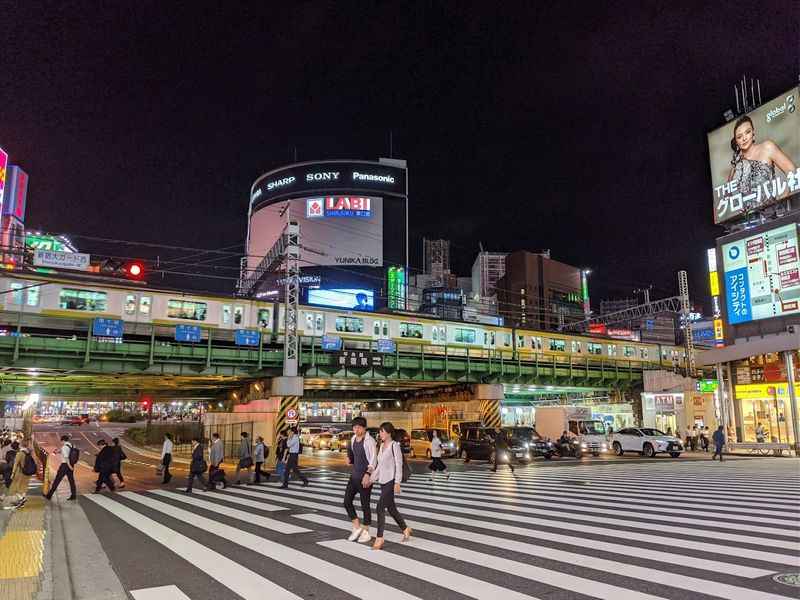
Memory Lane is a popular destination in Tokyo for those looking to experience the city's traditional atmosphere. This narrow alleyway is lined with small restaurants and bars, serving up a variety of grilled meats and seafood, along with an assortment of alcoholic beverages.
It was originally named "Piss Alley" for the lack of public restrooms in the area, leading patrons to relieve themselves in the alleys, but has since been transformed into a vibrant dining destination. If you're feeling adventurous, Piss Alley is a great place to try grilled salamander, frog sashimi, and pig testicles.
29. Take go-karts around the city streets

Taking go-karts in Tokyo is an exhilarating and unique way to experience the city's vibrant culture and iconic landmarks. The city has several companies that offer go-kart tours, allowing visitors to zip around the busy Tokyo streets while dressed up in fun costumes.
These tours typically pass by popular landmarks like the Tokyo Tower, Shibuya Crossing, and the Rainbow Bridge. Riding in a go-kart allows you to see the city from a new perspective. While the activity can be a bit nerve-wracking for some, it is a fun and safe way to explore Tokyo's bustling streets and is suitable for visitors of all ages.
30. Pay tribute to the Hachiko Statue in Shibuya
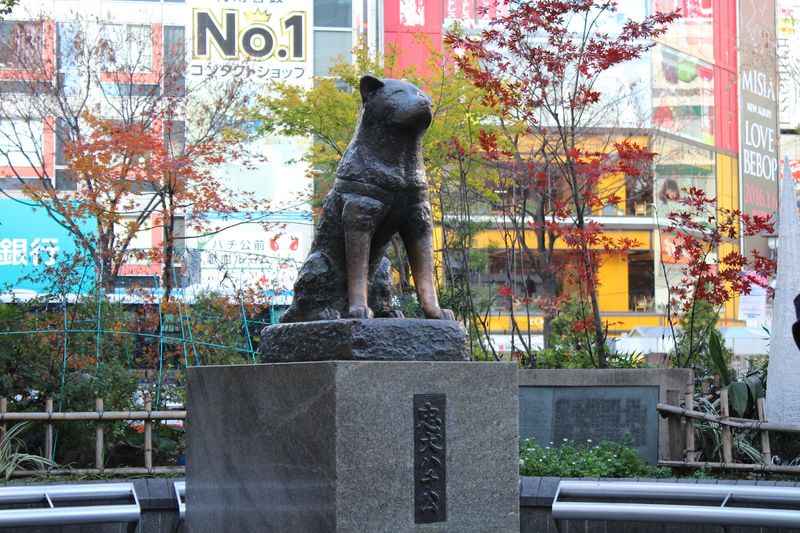
Shibuya Station is one of the busiest transportation hubs in Tokyo, serving millions of commuters and tourists every day. It is located in the heart of Shibuya, a vibrant and trendy neighborhood. Shibuya Station is home to many popular attractions like the famous Shibuya Crossing.
Another iconic attraction located near the station is the Hachiko Statue, a bronze statue of a loyal dog that became a symbol of devotion and loyalty. The statue commemorates the true story of Hachiko, who waited for his owner at the station every day, even after his owner's death.
31. Visit Meiji Shrine near Harajuku Station
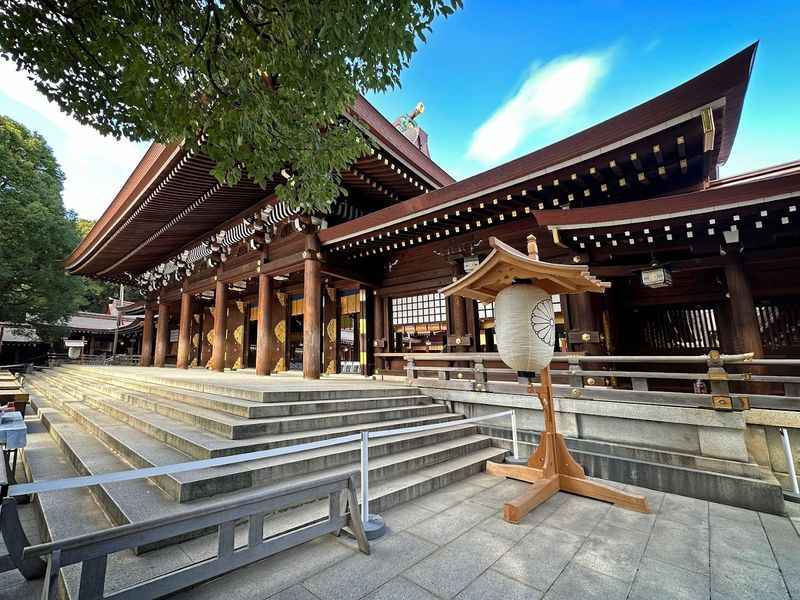
Meiji Shrine is a beautiful Shinto shrine located near Harajuku Station in Tokyo. The shrine was built in honor of Emperor Meiji and his wife, Empress Shoken, and is surrounded by a serene forested park.
Visitors can stroll along the forest paths and participate in traditional Shinto practices such as making offerings and purifying themselves at the temizuya. The shrine is also a popular spot for traditional Japanese weddings and other cultural events. Visiting Meiji Shrine provides a peaceful respite from the bustling city streets of Tokyo and offers a glimpse into Japan's rich spiritual heritage.
32. Visit the Yebisu Beer Museum

The Yebisu Beer Museum in Tokyo is a must-visit for beer enthusiasts and anyone interested in the history of beer in Japan. The museum is located in the former Yebisu brewery, which dates back to 1890 and was one of the first breweries in Japan to produce European-style beer.
Today, the museum offers a fascinating look at the brewing process and the history of Yebisu beer, including a collection of vintage beer labels, advertisements, and artifacts. Visitors can sample different Yebisu beers, and learn about the various brewing techniques used throughout the brewery's history.
33. Stay in an Onsen

Visiting an onsen (traditional Japanese hot springs)in Tokyo is an experience that should not be missed. These hot springs have been revered for their healing properties for centuries and are still popular among locals and tourists alike.
Soaking in the hot, mineral-rich waters can be incredibly relaxing and rejuvenating, and many onsens offer stunning views of the surrounding scenery. Many onsens offer other amenities such as saunas, massages, and traditional Japanese meals.
34. Take a day trip to Mount Fuji
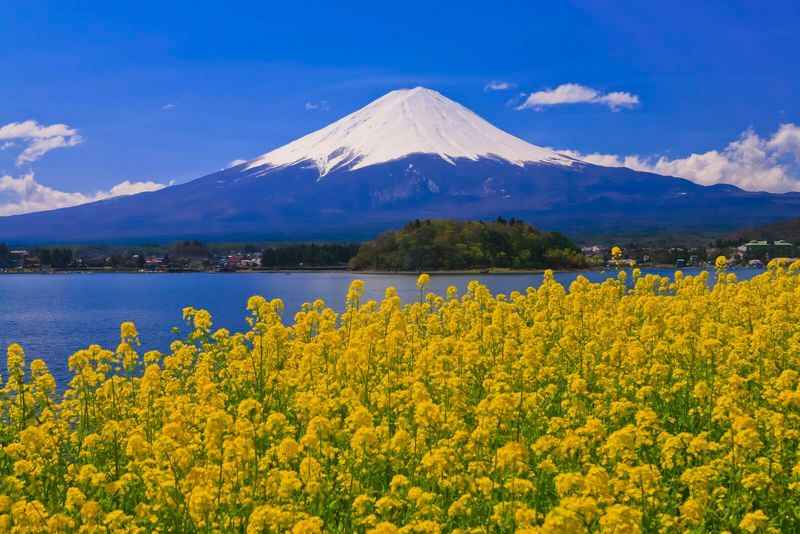
A day trip to Mount Fuji from Tokyo is an excellent way to experience one of Japan's most iconic natural landmarks. It is located about 100 kilometers southwest of Tokyo and is Japan's tallest peak, standing at 3,776 meters.
On a clear day, the view from the summit is truly stunning, with panoramic vistas of the surrounding valleys and lakes. In addition to the mountain, there are also several nearby attractions worth exploring, such as the Fuji Five Lakes, the Oshino Hakkai village, and the Chureito Pagoda.
35. Shop for unique souvenirs at Nakamise Shopping Street

Nakamise Shopping Street is a vibrant shopping district that leads up to the famous Sensoji Temple in Asakusa, Tokyo. The street is lined with more than 90 shops selling souvenirs, snacks, and traditional Japanese kimonos, fans, and ceramics.
The colorful storefronts and lively atmosphere make Nakamise a popular destination for both tourists and locals. The street has a long history, dating back to the Edo period, and has been a popular shopping area for centuries. Visitors can also try traditional Japanese snacks such as senbei rice crackers, ningyo-yaki cakes, and melon bread.
36. Spend a day at Tokyo Disneyland or DisneySea

Tokyo Disneyland andDisneySea are two of the most popular theme parks in Japan, located in the Tokyo Disney Resort in Urayasu, just outside of Tokyo. Tokyo Disneyland is modeled after the original Disneyland in California, while DisneySea is unique to Japan and features nautical and aquatic themes.
Both parks offer a wide variety of attractions, shows, and entertainment for visitors of all ages, including classic Disney rides such as Space Mountain and It's a Small World, as well as Japan-exclusive attractions such as the popular Toy Story Mania ride.
37. Have a picnic in Yoyogi Park

Yoyogi Park is one of Tokyo's largest and most popular public parks, located in Shibuya, just a short walk from Harajuku Station. The park features a wide variety of recreational activities, including jogging, picnicking, and sunbathing.
Yoyogi Park hosts the famous Harajuku Fashion Walk and various music festivals throughout the year. The park is also home to the Meiji Shrine and the Yoyogi National Gymnasium. Yoyogi Park is particularly beautiful in the springtime when the cherry blossoms are in bloom, making it a popular spot for hanami (cherry blossoms viewing).
38. Visit the Edo Tokyo Museum

The Edo Tokyo Museum in Tokyo is a fascinating museum that provides a detailed look at the history and culture of Tokyo during the Edo period (1603-1868) and the subsequent modernization period.
The museum features life-sized reconstructions of Edo-era streets and buildings, interactive displays, and a collection of artifacts and artworks from the period. Visitors can learn about the daily life of people during the Edo period, the development of the city, and the impact of modernization on Tokyo.
39. See iconic prints at Sumida Hokusai Museum

The Sumida Hokusai Museum in Tokyo is dedicated to the life and works of the renowned Japanese artist, Katsushika Hokusai, who is best known for his iconic woodblock print, "The Great Wave off Kanagawa".
The museum houses a permanent collection of Hokusai's artwork and exhibits that explore his creative process and artistic influences. One of the highlights of the museum is the viewing room, where visitors can see Hokusai's famous woodblock prints up close and appreciate the intricate details and vibrant colors of his work.
40. Peek inside room 306 of the Ginza Okuno building

The Ginza Okuno building is a prime example of the Art Deco style that was popular during the early 20th century. It was designed by the architect Yoshinobu Ashihara. Today, the building is home to a variety of shops, art galleries, and cafes, offering visitors a chance to experience the vibrant energy of Tokyo's shopping district.
One of the most unique features of the Ginza Okuno building is Room 306, which was the former residence of Osamu Dazai, one of Japan's most influential writers of the 20th century. The room has been preserved as a museum and offers a glimpse into the life of Dazai and his lover Tomie Yamazaki.
FAQs related to Fun Things to Do in Tokyo
Let's also explore some common questions relating to the best things to do in Tokyo.
Are 7 days in Tokyo too much?
Whether 7 days in Tokyo is too much or not depends on the individual's preferences and interests. Tokyo is a vibrant city with a lot to offer, from traditional cultural experiences to modern attractions. In general, 7 days can provide enough time to fully experience Tokyo without feeling too rushed.
What activities can visitors do in Tokyo?
Visitors to Tokyo have an endless array of activities to choose from. For those interested in Japanese culture, there are the Sensoji Temple and Meiji Shrine, as well as famous museums, including the Tokyo National Museum, Ghibli Museum, and the Mori Art Museum.
Shoppers can explore the many shopping districts like Ginza and Akihabara. For those seeking a taste of modern Tokyo, attractions like Tokyo Disneyland and the Tokyo Skytree are popular choices.
Is 5 days in Tokyo too much?
Five days in Tokyo can be an excellent amount of time to experience the city. Within five days, you can visit famous places like Shibuya Crossing, Tsukiji Fish Market, the Imperial Palace, and TeamLab Borderless. With a few day trips to Kamakura or Yokohama, you can add some variety to your itinerary and make the most of your time in Japan.
Is 4 days in Tokyo too much?
Four days can be a worthwhile trip when you visit Tokyo, although visitors may need to prioritize their itinerary.
Some of the must-see sights in Tokyo, such as the Meiji Shrine, the Sensoji Temple, and the Tsukiji Fish Market, can be covered in two to three days.
With the remaining time, visitors can explore other neighborhoods like Shinjuku, Roppongi, or Akihabara, and try out different restaurants or bars.
Summing Up: Fun Things to Do in Tokyo
Tokyo is a busy city that never fails to impress with its endless array of fun activities to do. From exploring Tokyo's traditional Japanese gardens to marveling at the Tokyo Tower and getting lost in the maze-like Shinjuku Station, there is always something new to discover.
Admiring the cherry blossoms in the spring is an unforgettable experience, and a visit to the teamLab Borderless digital art museum is one of the truly incredible things to do in Tokyo.
So plan your trip today, visit Tokyo, and immerse yourself in its vibrant culture!













